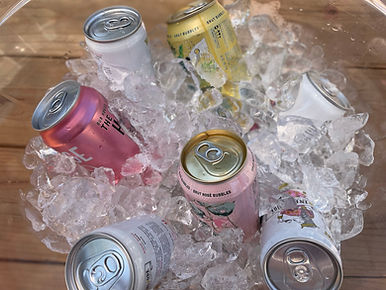IMPLEMENT: WINERY PACKAGING

Packaging’s High Carbon Footprint
Wine is fundamentally a packaged product, with glass bottles serving as the iconic and traditional packaging choice. While glass remains dominant, it's important to recognize that alternative packaging types offer significant value and diverse benefits. Throughout the lifecycle from production to disposal, wine packaging contributes substantially to California wine's carbon footprint, accounting for approximately 38% of the total environmental impact. Each stage of the packaging process—from raw material extraction to final disposal—creates environmental stress through energy consumption, water usage, and greenhouse gas emissions. The wine industry has committed to improving packaging sustainability through multiple approaches. This includes collaborating with vendors to reduce carbon footprints and partnering with municipalities to enhance recycling processes.
Priority Practices Quick Links:
Sustainable Packaging Solutions: Lightweight Bottles & Alternative Packaging
As global sustainability leaders, many California wine producers are actively evaluating methods to reduce their packaging impact, exploring strategies such as lightweight bottles and alternative packaging solutions (e.g., aluminum cans, bag-in-the box, wine kegs) and choosing products made with recycled content that can be recycled after use.
Benefits of Lightweight Bottles:
-
Weight: Lightweight glass bottles require less energy to manufacture, transport, and recycle, which reduces the carbon footprint of wine. Lightweighting can reduce a winery’s carbon footprint by 10-22% and lead to significant cost savings in the long run.
-
Cost: Lightweight bottles cost less than heavy bottles to produce and are more economical to transport since they weigh less and take up less space on pallets.
-
Recycling: Under current guidelines in California, wine bottles must be made from at least 35% post-consumer glass content, though many have higher recycled content. Lightweight bottles are easier for recycling facilities to handle, sort, and process. They also require less energy to melt down and reshape.
-
Strength and durability: Lightweight glass has been shown to be just as strong and durable as traditional glass packaging due to innovations in manufacturing.
Benefits of Aluminum Packaging:
-
Weight: Aluminum cans weigh nearly half as much as glass bottles for the same volume of wine. This translates to lower shipping costs and CO2 emissions due to less weight for transport.
-
Cost: Aluminum is cheaper than glass to manufacture and the lighter weight means shipping costs are also lower.
-
Recycling: Cans are made from 70% or more recycled aluminum and are endlessly recyclable.
-
Innovation: Slim cans, 4-packs and other innovative packaging such as aluminum wine bottles offer convenience (no corkscrew) and portability. The smaller portion size of cans appeals to moderation and new packaging options contribute to marketplace diversification.
Evaluate Packaging Needs
Reducing packaging impact requires a nuanced approach, as there is no universal solution that works for all producers. Each winery must evaluate various factors to determine the packaging solution that best aligns with their specific business needs and sustainability goals. When determining the best packaging type for your product, consider the following factors:
-
Material (e.g., cost-effectiveness, end-user convenience)
-
Recyclability
-
Energy Use & Carbon Footprint
-
Waste Generation
-
Transportation Efficiency (e.g., weight, durability)
-
Consumer Perceptions and Market Demand


-
Sustainable Packaging Factsheet: Provides information on packaging factors to consider and a decision matrix for alternative packaging types.
-
Innovations in Sustainable Packaging: Three Case Studies of Alternative and Lightweight Packaging: Shares examples from wineries who have implemented sustainable packaging changes.
-
Unpacking Wine: A Practical Journey Through the Environmental Landscape of Packaging: An in-depth guide developed by the Porto Protocol with practical, actionable steps for making packaging decisions that reduce the environmental footprint of packaging.
-
Trade Research on Climate Beneficial Attributes of Wine: Results from a 2023 trade research study that includes packaging considerations and trade perceptions of lightweight bottles.
